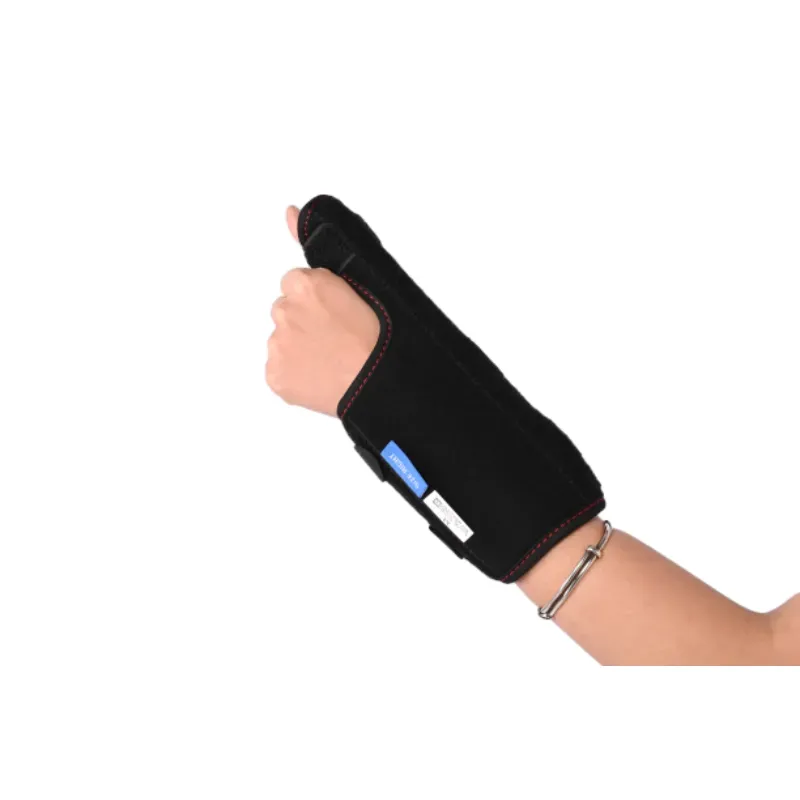Khám phá cơ sinh học trong thiết kế nẹp cổ tay
Cơ chế sinh học của nẹp cổ tay đóng vai trò quan trọng trong việc thiết kế và hiệu quả của các sản phẩm như nẹp cổ tay để bán, nẹp ngón tay có hỗ trợ cổ tay, Và nẹp ngón tay cái linh hoạt. Understanding the natural movements and forces acting on the wrist is essential in creating splints that offer proper support, flexibility, and comfort. In this article, we’ll explore how biomechanical principles influence wrist splint design, highlighting their impact on function and patient recovery.

Cơ sinh học đằng sau nẹp cổ tay để bán
Thiết kế của một nẹp cổ tay để bán incorporates key biomechanical concepts to ensure optimal support and movement restriction. Wrist splints are designed to support the wrist joint while allowing for a natural range of motion in the fingers and thumb. By applying principles like load distribution and force absorption, the splint alleviates pressure on the wrist joint, which is particularly important for conditions such as sprains, arthritis, or carpal tunnel syndrome. Understanding how forces affect the wrist allows manufacturers to create a nẹp cổ tay để bán mang lại sự cân bằng phù hợp giữa khả năng hỗ trợ và khả năng di chuyển.
Nẹp ngón tay có hỗ trợ cổ tay: Cơ chế chức năng
Các nẹp ngón tay có hỗ trợ cổ tay is an innovative design that combines support for the fingers and the wrist in one cohesive unit. Biomechanically, this design helps prevent unwanted motion in both the wrist and finger joints while still enabling essential hand movements. This is particularly useful for those recovering from injuries like fractures or tendon strains. The incorporation of joint stabilization principles ensures that the splint provides the necessary immobilization without interfering with blood circulation or causing muscle stiffness, thus promoting a quicker recovery.
Nẹp ngón tay cái linh hoạt: Cân bằng khả năng vận động và sự ổn định
Các nẹp ngón tay cái linh hoạt is designed with biomechanics in mind to strike a balance between mobility and stability. Its flexible material allows the thumb to move within a controlled range while providing support to the joint, which is essential for reducing pain caused by conditions such as thumb arthritis or tendonitis. Biomechanically, a thumb splint must allow for functional motion while preventing excessive stress on the joint. The use of flexible yet supportive materials ensures that the splint offers both stability and the freedom to move, aiding the rehabilitation process.
Những cân nhắc về cơ sinh học khi tùy chỉnh nẹp cổ tay
Every patient’s biomechanical needs are unique, and the nẹp cổ tay để bán, cùng với các loại khác như nẹp ngón tay có hỗ trợ cổ tay Và nẹp ngón tay cái linh hoạt, should be customized for maximum effectiveness. By understanding the specific biomechanics of the individual’s wrist, hand, and fingers, manufacturers can design splints that fit comfortably and provide the most support where needed. Customization may involve adjusting the degree of immobilization, selecting the right materials for comfort, and ensuring that the splint aligns with the patient’s natural wrist movement.
Tác động của cơ sinh học đến quá trình phục hồi với nẹp cổ tay
Sự thành công của nẹp cổ tay trong việc thúc đẩy quá trình chữa lành phụ thuộc rất nhiều vào việc tuân thủ các nguyên tắc cơ sinh học. nẹp cổ tay để bán, nẹp ngón tay có hỗ trợ cổ tay, Và nẹp ngón tay cái linh hoạt tất cả đều hoạt động bằng cách giúp ổn định cổ tay và ngón tay cái, giảm căng thẳng cho cơ và dây chằng. Bằng cách cân nhắc cẩn thận các lực cơ sinh học tác động lên cổ tay, các nhà sản xuất có thể thiết kế nẹp hỗ trợ định vị tối ưu, do đó giảm đau và hỗ trợ phục hồi. Thiết kế cơ sinh học phù hợp không chỉ có thể bảo vệ vùng bị thương mà còn tạo điều kiện cho quá trình chữa lành nhanh hơn và thoải mái hơn.
Tóm lại, hiểu biết về cơ sinh học là điều cần thiết để thiết kế nẹp cổ tay như nẹp cổ tay để bán, nẹp ngón tay có hỗ trợ cổ tay, Và nẹp ngón tay cái linh hoạt. These splints are designed to provide the right combination of support, flexibility, and comfort, ensuring effective rehabilitation and promoting faster recovery. Whether it’s a simple sprain or a chronic condition, the correct splint can significantly improve a patient’s quality of life and help them return to their daily activities sooner.
-
Top Back Support SolutionsTin tức Jul.28,2025
-
Support for Hand and Thumb HealthTin tức Jul.28,2025
-
Powerful Back Support SolutionsTin tức Jul.28,2025
-
Essential Back Support SolutionsTin tức Jul.28,2025
-
Effective Hand and Wrist Support SolutionsTin tức Jul.28,2025
-
Comprehensive Thoracic and Lumbar SupportTin tức Jul.28,2025





















